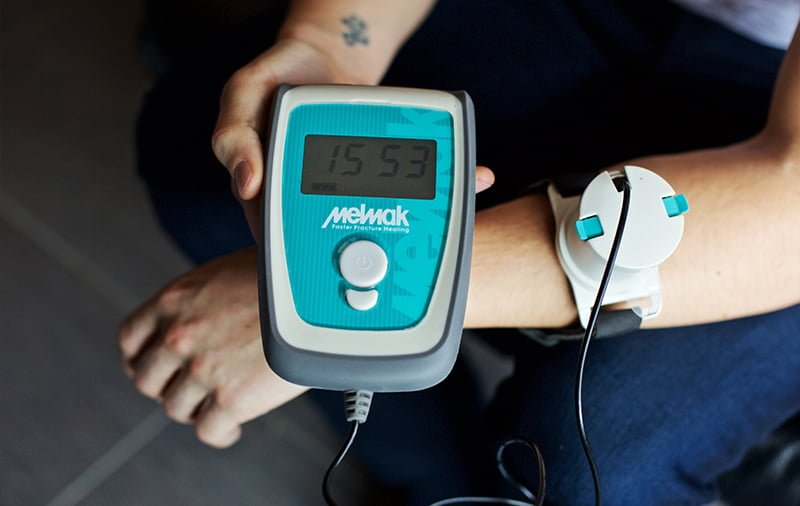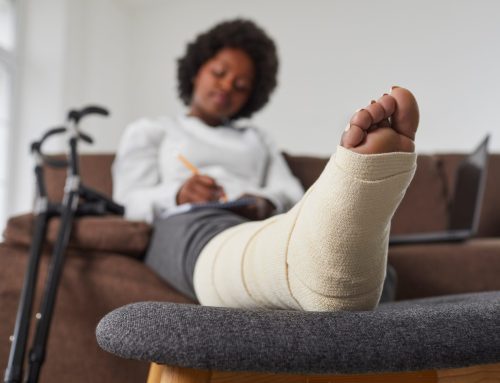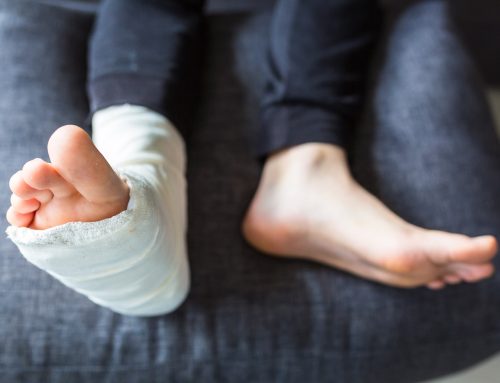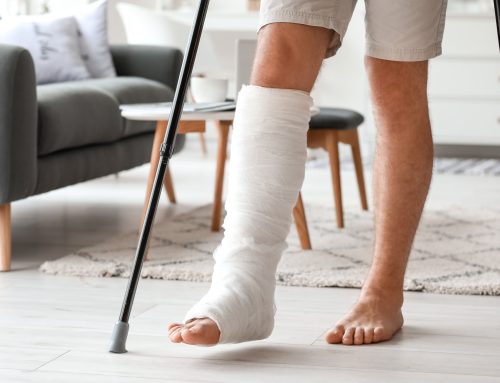People can fracture their bones at a variety of ages, from baby to senior, and for a variety of causes. The most common break is a clavicle, or collarbone break, followed by arm, wrist, and hip fractures. Fractures occur when there is too much force applied to the bone which it cannot absorb. This can occur as a result of a fall, traumatic accident, or a direct blow.

Our bones are also the weakest when they are twisted. The good news is that our bones have incredible self-healing properties and if the fracture is unable to heal, there is low intensity pulsed ultrasound therapy which can accelerate the process and ensure that healing occurs.
What are our bones made of?
Our bones protect our organs, produce red and white blood cells, enable us to move, store minerals, and give structure to our bodies.
Bones are not dead, rather they are full of living cells that are consistently rebuilding the bone. The body can heal most fractures on its own. After a break, the bone goes through a healing process of overlapping steps: inflammation, soft callus, hard callus, and remodelling.
Steps of fracture healing:
- Inflammation: Immediately after you fracture a bone, there is bleeding into the area which causes inflammation. The inflammation response peaks within 24 hours and lasts for days. Broken bones result in torn blood vessels and the formation of a blood clot. The hematoma, or localized bleeding, consists of cells from nearby stem, blood and bone marrow cells. Cells called phagocytes start cleaning bone fragments and killing any germs which might have gotten in around the fracture. The hematoma coagulates around the fracture ends and creates a base for callus formation. The inflammation stage releases proteins and growth factors which are important in healing.
- Soft callus: In this phase of the healing process, bone production begins when the clotted blood is replaced with fibrous tissue and cartilage. A soft callus made mostly of collagen is created around the fracture site. Soft callus, as the name suggests, is soft and can easily bend or be deformed, so it is not strong enough to withstand the pressures of our daily lives. Soft callus formation peaks around eight days after the bone breaks; the soft callus stage can last for weeks.
- Hard callus: As the bone healing progresses, the soft callus begins to be replaced with a hard callus. The hard callus forms as osteoblasts, cells that form new bone, create new bone material, adding minerals to make it hard. New bone starts to form mostly at the edges of the fracture. Hard callus is stronger than soft callus and can withstand some forces; at this stage, the fracture is not as tender or sore with movement. Hard callus shows up on x-rays several weeks after the fracture but is weaker than normal bone. This healing phase typically begins two weeks after the fracture and ends between the sixth and twelfth week.
- Remodelling: In the final stage of the bone healing process, the hard callus is remodelled into the bone structure. Bone cells called osteoclasts break down the callus around the fracture, smoothing the fracture site, while the osteoblast cells build new bone. Blood circulation in the area improves while the bone forms and becomes compact. This process starts at three to four weeks but can take years to complete.
When healing needs assistance
Minor fractures can heal themselves but it’s important to ensure to immobilize the body part, such as using a cast or splint. Breaks can also be very painful so pain management is also essential. Following the doctor’s recommendations for treatment, rest, and exercise are essential. It’s also important to maintain a healthy diet with the essential vitamins needed for healing and to not smoke cigarettes or drink alcohol while healing the bone.
Many factors can slow down the bone healing process and cause a fracture not to heal fully. At the local level, fractures that are severe, with extensive damage, can take longer to heal. If there is a reduced blood supply to the area or infection, these can also cause issues with healing. As we age, our bones heal slower. There are also further complications for people who smoke, have poor health or malnutrition, are obese, or have other medical conditions.
Around five percent of bone fractures fail to heal on their own, this is called a nonunion and may require surgery. United fractures are those that heal in the expected length of time, whereas a delayed union takes longer than normal to heal.
Speeding up the fracture healing process
Low-Intensity Pulsed Ultrasound (LIPUS) is a form of ultrasound that is delivered at a lower intensity than traditional ultrasound energy. Ultrasound energy is a type of sound wave with a frequency of vibration above the typical human audible range. Ultrasound energy promotes bone healing by increasing the incorporation of calcium ions into cartilage and bone cells, which stimulates the expression of numerous genes involved in the healing process.
First, the LIPUS device sends ultrasound waves through the skin and soft tissues, which activates cell receptors called integrins. The integrins begin to cluster, initiating an intracellular cascade, which stimulates molecules that regulate gene expression to move into the nucleus. This intracellular cascade results in increased protein expression critical to the bone healing process.
LIPUS therapy is delivered via small devices that are placed on the skin above the fracture. A mechanical force is sent to the bone to stimulate healing. This treatment can be done at home without doctor supervision and only takes twenty minutes a day to have results on accelerating the bone healing process. Fracture healing results by LIPUS devices are similar to those seen after surgery.
In several studies, early use of LIPUS therapy is associated with fracture healing on average in 96 percent of patients. Ultrasound therapy is painless and non-invasive, most patients do not feel any sensation while some experience only a slight tingly sensation.
Inline Medical Inc. has more than 15 years of experience in ultrasound fracture healing and distributes LIPUS devices in Canada directly to patients and clinics. LIPUS devices are available with a subsidized rental program for patients without insurance. Using ultrasound therapy at home ensures a fracture is completely healed and healed sooner.





